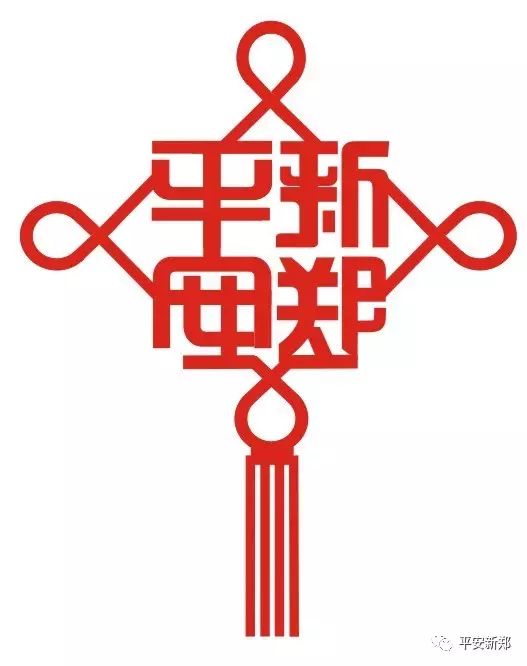Click the “Ping An Xin Zheng” above to subscribe!
Do you remember those once-famous “Qigong Masters”?In martial arts films, masters can strike from a distance, causing harm without physical contact. Is there really such a martial art?What exactly is Qigong? Is it as miraculous as the legends suggest?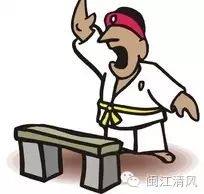 Today, let Dr. Zhang Honglin, a researcher at the China Academy of Chinese Medical Sciences (formerly the China Academy of Traditional Chinese Medicine) and former director of the Qigong Research Office, unveil the mysteries of Qigong!The Origins of Qigong
Today, let Dr. Zhang Honglin, a researcher at the China Academy of Chinese Medical Sciences (formerly the China Academy of Traditional Chinese Medicine) and former director of the Qigong Research Office, unveil the mysteries of Qigong!The Origins of Qigong
 Before explaining what Qigong is, let’s delve into its origins. The “Huangdi Neijing” states: “In ancient times, there were true practitioners who harnessed the heavens and the earth, balanced yin and yang, breathed in vital energy, and maintained their spirit, with muscles like one.” The fact that even the “Huangdi Neijing” refers to it as “ancient” indicates that Qigong is not a modern phenomenon; its history is very long, and its development has undergone a lengthy period. In the 1950s, a man named Liu Guizhen from Hebei cured his stomach disease through Qigong practice. After the news spread, Liu Guizhen received significant attention from the state, and thus, in a time when domestic medical conditions were relatively poor, Qigong, which could treat diseases without medication or injections, was widely promoted. This led to the first “wave” of Qigong practice in the country. The second wave occurred in the late 1970s when a man named Gu Hansan from Shanghai claimed to have measured the external energy emitted by Qigong practitioners, causing a nationwide sensation. The trend of practicing Qigong to emit external energy for healing surged again, resulting in a continuous emergence of “Qigong Masters.” What is Qigong?
Before explaining what Qigong is, let’s delve into its origins. The “Huangdi Neijing” states: “In ancient times, there were true practitioners who harnessed the heavens and the earth, balanced yin and yang, breathed in vital energy, and maintained their spirit, with muscles like one.” The fact that even the “Huangdi Neijing” refers to it as “ancient” indicates that Qigong is not a modern phenomenon; its history is very long, and its development has undergone a lengthy period. In the 1950s, a man named Liu Guizhen from Hebei cured his stomach disease through Qigong practice. After the news spread, Liu Guizhen received significant attention from the state, and thus, in a time when domestic medical conditions were relatively poor, Qigong, which could treat diseases without medication or injections, was widely promoted. This led to the first “wave” of Qigong practice in the country. The second wave occurred in the late 1970s when a man named Gu Hansan from Shanghai claimed to have measured the external energy emitted by Qigong practitioners, causing a nationwide sensation. The trend of practicing Qigong to emit external energy for healing surged again, resulting in a continuous emergence of “Qigong Masters.” What is Qigong? So, what is Qigong? Professor Zhang Honglin explains in his book “Returning to the Source – Restoring the True Nature of Qigong”: In TCM terms, Qigong is a practice that coordinates the flow of qi (vital energy) through mental regulation to achieve a balance of yin and yang and to prevent and treat diseases. In modern scientific language, Qigong is a self-hypnosis method that allows consciousness to enter a state of self-hypnosis (known as entering tranquility), through positive psychological adjustments, leading to a harmonious physiological function of various systems in the body, and even repairing pathological conditions, thus preventing diseases. It is evident that Qigong is a form of self-regulation, utilizing psychological suggestion and hypnosis to achieve self-regulation, influencing physiological functions through psychological means.Can Qigong really emit “external energy”?
So, what is Qigong? Professor Zhang Honglin explains in his book “Returning to the Source – Restoring the True Nature of Qigong”: In TCM terms, Qigong is a practice that coordinates the flow of qi (vital energy) through mental regulation to achieve a balance of yin and yang and to prevent and treat diseases. In modern scientific language, Qigong is a self-hypnosis method that allows consciousness to enter a state of self-hypnosis (known as entering tranquility), through positive psychological adjustments, leading to a harmonious physiological function of various systems in the body, and even repairing pathological conditions, thus preventing diseases. It is evident that Qigong is a form of self-regulation, utilizing psychological suggestion and hypnosis to achieve self-regulation, influencing physiological functions through psychological means.Can Qigong really emit “external energy”?
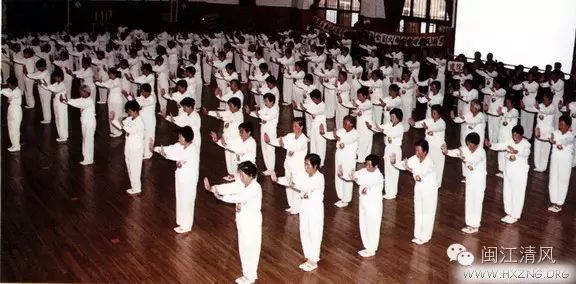 Comparing the above explanations, it is found that Liu Guizhen’s self-healing through Qigong aligns with this, but what about the claims of using external energy to heal during the second wave of Qigong practice? Could there be a misunderstanding? Not at all; let’s look at a few examples: Yan Xin, one of the more famous “Qigong Masters” in the 1980s, was hailed as the “Modern Ji Gong” because it was said that he healed people using external energy, and he conducted Qigong experiments in Tsinghua University laboratories, “proving” that the external energy he emitted could affect the structure of biological molecules, which made him famous for a time. However, Professor Zhang Honglin, in his capacity as the head of the Qigong Research Office at the China Academy of Traditional Chinese Medicine, personally debated with Yan Xin, and the results were not as the public believed. Yan Xin did indeed cure a few patients, but not through Qigong; rather, he used psychological suggestion to treat patients with psychological disorders. Additionally, the Tsinghua University experiment was a fabricated report created by Yan Xin and his partners, and the so-called Tsinghua University Qigong Research Institute does not exist at all… Another example is a Qigong practitioner from Shandong who claimed he could emit invisible energy lines that could block people from passing through, but after eliminating conditions for cheating (such as the test subject being his own son and in a specific room), the energy lines could not be felt at all; it was merely a magic trick. Through years of interaction with various “Qigong Masters,” Professor Zhang discovered that the “external energy” claimed by these “Masters” does not exist at all. Can practicing Qigong heal others?
Comparing the above explanations, it is found that Liu Guizhen’s self-healing through Qigong aligns with this, but what about the claims of using external energy to heal during the second wave of Qigong practice? Could there be a misunderstanding? Not at all; let’s look at a few examples: Yan Xin, one of the more famous “Qigong Masters” in the 1980s, was hailed as the “Modern Ji Gong” because it was said that he healed people using external energy, and he conducted Qigong experiments in Tsinghua University laboratories, “proving” that the external energy he emitted could affect the structure of biological molecules, which made him famous for a time. However, Professor Zhang Honglin, in his capacity as the head of the Qigong Research Office at the China Academy of Traditional Chinese Medicine, personally debated with Yan Xin, and the results were not as the public believed. Yan Xin did indeed cure a few patients, but not through Qigong; rather, he used psychological suggestion to treat patients with psychological disorders. Additionally, the Tsinghua University experiment was a fabricated report created by Yan Xin and his partners, and the so-called Tsinghua University Qigong Research Institute does not exist at all… Another example is a Qigong practitioner from Shandong who claimed he could emit invisible energy lines that could block people from passing through, but after eliminating conditions for cheating (such as the test subject being his own son and in a specific room), the energy lines could not be felt at all; it was merely a magic trick. Through years of interaction with various “Qigong Masters,” Professor Zhang discovered that the “external energy” claimed by these “Masters” does not exist at all. Can practicing Qigong heal others?
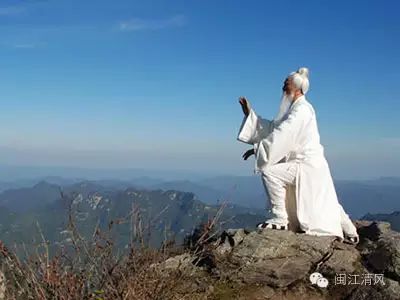 In real life, there are indeed many examples of Qigong practitioners healing others, such as Professor Zhang himself, who has cured many patients, but this was not through the so-called “external energy”; rather, it was through psychological suggestion or hypnosis techniques to provide psychological treatment to specific patients, not the miraculous claims of “curing all diseases”. So, what kind of “specific patients” and what kind of “psychological suggestion” and “hypnosis” can lead to healing? “Specific patients” refer to those who are relatively suggestible and believe that Qigong can heal, meaning they fully trust the Qigong practitioner; “psychological suggestion” is when the Qigong practitioner continuously sends messages to the patient through various sensory channels (such as auditory, visual, tactile, etc.), suggesting that they feel “happy,” “calm,” or “certain to be cured,” leading the patient to believe that their illness can be healed through this special method. The aim is to help the patient regulate their breath in a certain aspect, change their original perception of themselves, overcome psychological barriers, and establish a new self-awareness. For example: A patient with a foot injury that had not healed for a long time and could not walk came to seek Professor Zhang’s help, hoping to be cured through Qigong. Professor Zhang learned that the foot injury had persisted for over eight months, and previous examinations showed that the muscles, nerves, blood vessels, and bones were all intact, so he determined it to be a psychologically-based condition, meaning the patient subconsciously believed their injury was not healed and was afraid to walk. Therefore, Professor Zhang used psychological suggestion to help the patient believe that they could be completely cured. After a series of “treatments,” the patient was indeed able to walk again.How to Identify “Pseud-Qigong”?
In real life, there are indeed many examples of Qigong practitioners healing others, such as Professor Zhang himself, who has cured many patients, but this was not through the so-called “external energy”; rather, it was through psychological suggestion or hypnosis techniques to provide psychological treatment to specific patients, not the miraculous claims of “curing all diseases”. So, what kind of “specific patients” and what kind of “psychological suggestion” and “hypnosis” can lead to healing? “Specific patients” refer to those who are relatively suggestible and believe that Qigong can heal, meaning they fully trust the Qigong practitioner; “psychological suggestion” is when the Qigong practitioner continuously sends messages to the patient through various sensory channels (such as auditory, visual, tactile, etc.), suggesting that they feel “happy,” “calm,” or “certain to be cured,” leading the patient to believe that their illness can be healed through this special method. The aim is to help the patient regulate their breath in a certain aspect, change their original perception of themselves, overcome psychological barriers, and establish a new self-awareness. For example: A patient with a foot injury that had not healed for a long time and could not walk came to seek Professor Zhang’s help, hoping to be cured through Qigong. Professor Zhang learned that the foot injury had persisted for over eight months, and previous examinations showed that the muscles, nerves, blood vessels, and bones were all intact, so he determined it to be a psychologically-based condition, meaning the patient subconsciously believed their injury was not healed and was afraid to walk. Therefore, Professor Zhang used psychological suggestion to help the patient believe that they could be completely cured. After a series of “treatments,” the patient was indeed able to walk again.How to Identify “Pseud-Qigong”?
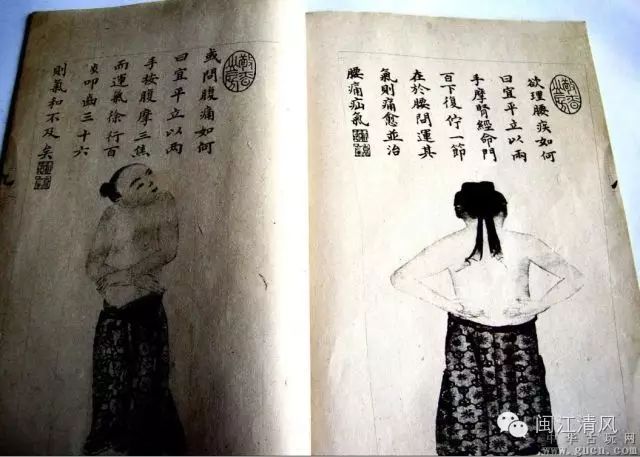 Since the 1980s, many so-called “Qigong Masters” have emerged in the country, such as “Modern Hua Tuo” Hu Wanlin, “Extraterrestrial Guest” Zhang Baosheng, “Shadow President of China” Zhang Hongbao, “Modern Ji Gong” Yan Xin, and the well-known Wang Lin. They all claimed to treat diseases and alleviate disasters under the banner of Qigong and were once praised and recognized by many. What is the cause of this phenomenon? This is what we refer to as pseud-Qigong. The aforementioned Qigong practitioners use “psychological suggestion” and “hypnosis” techniques to convince people. Ethical Qigong practitioners, once the patient is healed, stop there, but those “pseud-Qigong Masters” will package their healing process, which originally aimed to change consciousness and help patients recover, into claims of “releasing a powerful energy field” or “special abilities,” and even use superstitions to deceive the public, thereby deifying themselves and ultimately achieving the goal of amassing wealth. A few years ago, Wang Lin, who was very popular, managed to get various celebrities to help him promote himself, claiming he could summon snakes from an empty basin and that he had cured Indonesian President Suharto and Russian President Putin, even providing photos of the treatments. Who could not believe it? But when people asked for details, he would respond that it was all a “secret.” Summoning snakes from an empty basin is also known as a basic magic trick… While Qigong does have benefits for strengthening the body, cultivating character, and developing intelligence, practicing Qigong must be done in moderation. For instance, the aspect of “entering tranquility” is quite similar to the Buddhist practice of “sitting meditation”. The “Lankavatara Sutra” explains the illusions seen during meditation as: when regarded as illusions, they are not surprising, and the strange phenomena will naturally dissipate. Thus, moderation is key.
Since the 1980s, many so-called “Qigong Masters” have emerged in the country, such as “Modern Hua Tuo” Hu Wanlin, “Extraterrestrial Guest” Zhang Baosheng, “Shadow President of China” Zhang Hongbao, “Modern Ji Gong” Yan Xin, and the well-known Wang Lin. They all claimed to treat diseases and alleviate disasters under the banner of Qigong and were once praised and recognized by many. What is the cause of this phenomenon? This is what we refer to as pseud-Qigong. The aforementioned Qigong practitioners use “psychological suggestion” and “hypnosis” techniques to convince people. Ethical Qigong practitioners, once the patient is healed, stop there, but those “pseud-Qigong Masters” will package their healing process, which originally aimed to change consciousness and help patients recover, into claims of “releasing a powerful energy field” or “special abilities,” and even use superstitions to deceive the public, thereby deifying themselves and ultimately achieving the goal of amassing wealth. A few years ago, Wang Lin, who was very popular, managed to get various celebrities to help him promote himself, claiming he could summon snakes from an empty basin and that he had cured Indonesian President Suharto and Russian President Putin, even providing photos of the treatments. Who could not believe it? But when people asked for details, he would respond that it was all a “secret.” Summoning snakes from an empty basin is also known as a basic magic trick… While Qigong does have benefits for strengthening the body, cultivating character, and developing intelligence, practicing Qigong must be done in moderation. For instance, the aspect of “entering tranquility” is quite similar to the Buddhist practice of “sitting meditation”. The “Lankavatara Sutra” explains the illusions seen during meditation as: when regarded as illusions, they are not surprising, and the strange phenomena will naturally dissipate. Thus, moderation is key.
Those who use these illusions to mythologize their pseud-Qigong practices may even degenerate into cult leaders, and the harm they cause is truly appalling.
Source: China Anti-Cult Network, please indicate the source when reprinting. Editor: Ruifang
Ping An Xin Zheng We walk together
